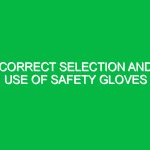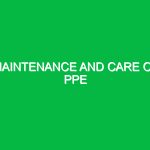In the realm of workplace safety, the significance of ensuring proper fit of safety footwear cannot be overstated. Safety footwear is designed to protect workers from a variety of hazards, but if it does not fit correctly, it can lead to discomfort, injuries, and even undermine the very purpose it was intended to serve. This article delves into the critical importance of ensuring proper fit of safety footwear within the Health, Safety, and Environment (HSE) domain, exploring the risks associated with improper fitting, best practices for selection and usage, and the regulatory frameworks that govern these essential safety tools.
The Importance of Proper Fit in Safety Footwear
Properly fitting safety footwear is essential in preventing workplace injuries. Ill-fitting shoes can cause blisters, calluses, and even more severe conditions such as plantar fasciitis or stress fractures. In high-risk environments—like construction sites, factories, or laboratories—these issues can lead to a decrease in productivity and an increase in accidents.
For instance, I once spoke with a safety officer at a manufacturing plant who recounted a near-miss incident involving a worker whose safety boots were too tight. The worker, distracted by discomfort, lost his balance while carrying a heavy load and almost fell into a machine. Thankfully, he caught himself, but the incident highlighted how something as seemingly minor as shoe fit could have dire consequences.
Understanding the Hazards of Improperly Fitting Footwear
When it comes to ensuring proper fit of safety footwear, several hazards can arise from neglecting this crucial aspect. Below, we delve into some of the most common risks associated with improper fitting safety footwear.
1. Physical Injuries
Improperly fitting safety shoes can lead to various physical injuries. Shoes that are too tight may cause blisters and calluses, while those that are too loose can lead to slips and falls. A loose fit may also result in the foot sliding inside the shoe, reducing control and increasing the risk of tripping over obstacles.
2. Long-Term Health Issues
Beyond immediate physical injuries, long-term health issues can develop from wearing ill-fitting footwear. Conditions such as plantar fasciitis, bunions, and hammertoes can emerge, leading to chronic pain and decreased mobility. For workers who are on their feet all day, these issues can significantly impact their quality of life.
3. Decreased Productivity
Workers who are uncomfortable due to poor-fitting shoes may experience decreased productivity. Discomfort can distract employees, leading to a lack of focus and an increased likelihood of accidents. In industries where attention to detail is paramount, this can have serious repercussions.
4. Compliance Risks
Employers are often required to adhere to specific regulations regarding workplace safety. Providing improperly fitting footwear can lead to non-compliance, resulting in fines and legal ramifications. Ensuring proper fit is not just a matter of comfort—it’s also a matter of legal responsibility.
Best Practices for Ensuring Proper Fit of Safety Footwear
To mitigate these risks, it’s crucial to adopt best practices when selecting and using safety footwear. Here are several actionable steps to ensure proper fit.
1. Conduct a Proper Fit Assessment
Before purchasing safety footwear, a thorough fit assessment should be conducted. This includes measuring both the length and width of the foot. It’s recommended to measure feet at the end of the day when they are most swollen. A common mistake is assuming all shoe sizes are the same across brands; in reality, sizes may vary significantly.
2. Try Before You Buy
Whenever possible, workers should try on safety footwear before making a purchase. They should walk around in the shoes to assess comfort levels, ensuring that there is adequate room in the toe box and that the heel fits snugly without slipping. This is a crucial step, as the feel of the shoe in a stationary position can differ greatly from its performance in motion.
3. Choose the Right Type of Footwear
Different jobs require different types of safety footwear. Steel-toed boots may be necessary for construction workers, while electrical hazard shoes are crucial for electricians. Understanding the specific hazards of the job can guide the selection of appropriate footwear. Moreover, lightweight options are available that offer protection without sacrificing comfort, which can be particularly beneficial for workers who are on their feet for extended periods.
4. Regularly Check Fit and Condition
Footwear should not be a “set it and forget it” consideration. Regularly checking the fit and condition of safety footwear is vital. Over time, shoes can stretch, wear out, or lose their protective qualities. A proactive approach helps ensure that employees always have functional and properly fitting safety footwear.
5. Educate Employees
Employers should provide education on the importance of proper fitting footwear. Training sessions can cover how to assess fit and the risks associated with improper footwear. When employees understand the impact of their footwear choices, they are more likely to take the necessary steps to ensure proper fit.
Regulatory Standards Governing Safety Footwear
In many regions, safety footwear is governed by specific regulations and standards. For instance, in the United States, the American National Standards Institute (ANSI) and the Occupational Safety and Health Administration (OSHA) set forth guidelines that employers must follow to ensure workplace safety.
ANSI/ASTM standards define the performance requirements for safety footwear based on the degree of protection needed for different hazards. For example, ANSI Z41 outlines the necessary requirements for protective footwear, including impact resistance and puncture resistance. Additionally, OSHA regulations stipulate that employers must provide personal protective equipment (PPE), including safety footwear, at no cost to employees when required by the job.
Conclusion: The Path to Safety Through Proper Footwear Fit
Ensuring proper fit of safety footwear is a critical component of workplace safety in the HSE domain. The risks associated with improperly fitting footwear can lead to injuries, long-term health issues, decreased productivity, and compliance violations. By adopting best practices such as conducting thorough fit assessments, trying on footwear, and regularly checking fit and condition, employers and employees can take proactive steps toward minimizing these risks.
Moreover, understanding and adhering to regulatory standards ensures that organizations remain compliant and prioritize the safety of their workforce. Ultimately, the journey to a safer work environment begins with something as fundamental as the right pair of shoes. By recognizing the importance of proper fit, we can pave the way for safer, more productive workplaces.


